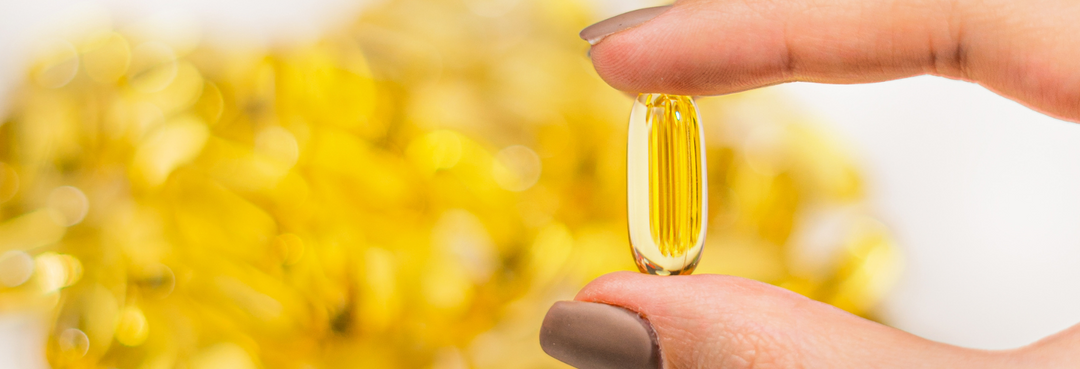A pinched nerve might sound minor, but if you've experienced one, you know just how disruptive it can be. Pain, numbness, tingling, weakness — it can sideline your routines, your sleep, even your sense of well-being. But what about when things start to shift? How do you know if you're actually healing or just catching a break between flare-ups?
At Pure Essentials, we believe in helping you understand your body’s messages. And when it comes to pinched nerve healing signs, knowing what to look for can guide your recovery with confidence — not confusion.
In this article, we’ll break down:
-
What causes a pinched nerve
-
The most reliable pinched nerve healing signs
-
How long healing typically takes
-
Natural ways to support recovery
-
Tools to help you track your progress
What is a Pinched Nerve?
A pinched nerve happens when pressure from surrounding tissue — such as bone, cartilage, muscles, or tendons — compresses a nerve. That pressure disrupts the nerve’s ability to send signals properly, leading to:
-
Tingling or “pins and needles”
-
Sharp, radiating pain
-
Numbness or burning
-
Muscle weakness or impaired movement
Common places for this to occur include:
-
Cervical spine (neck) — often causing shoulder or arm symptoms
-
Lumbar spine (lower back) — linked to sciatica or leg discomfort
-
Wrist/elbow — as in carpal tunnel or cubital tunnel syndrome
Left unaddressed, prolonged compression can lead to lasting nerve damage. That’s why identifying early pinched nerve healing signs — and supporting them naturally — is so important.
7 Key Pinched Nerve Healing Signs
Not sure if you're getting better? These are the most reliable pinched nerve healing signs that indicate your body is on the right path:
1. Decreased Tingling and Numbness
That buzzing, prickly sensation tends to be one of the first symptoms — and thankfully, one of the first to fade. If you're noticing fewer “pins and needles” or episodes of numbness, that’s a strong indicator that nerve pressure is decreasing.
Support Tip: Magnesium glycinate and vitamin B6 help calm nerve firing and support regeneration.
2. Less Frequent or Less Intense Pain
As nerves begin to heal, the sharp or burning pain becomes more dull, less frequent, or easier to manage. If pain is no longer constant and is improving with rest or therapy, that’s a clear healing sign.
3. Improved Range of Motion
When inflammation settles and muscles stop guarding the affected area, you may notice you're moving more freely — whether that means turning your neck, reaching overhead, or bending forward without hesitation.
4. Strength Is Coming Back
If the pinched nerve impacted motor function, a return of strength (even partial) is a significant sign of healing. Maybe your grip is stronger, or your steps feel more stable — these changes matter.
5. Diminished Referred Pain
Radiating pain (like sciatica) often lessens as the root compression resolves. If your symptoms are becoming more localized rather than widespread, it suggests the nerve is recovering.
6. Better Sleep
Pain often intensifies at night, especially with nerve issues. If you’re sleeping more soundly and waking up less stiff or achy, that’s a powerful sign your body is moving into repair mode.
7. Positive Response to Natural Therapies
Chiropractic care, acupuncture, targeted supplements, and manual therapies like myofascial release can support healing. If you’re feeling better after these treatments, your body is responding — and that’s good news.
Track Your Pinched Nerve Healing Signs
Whether you’re in week one or month three, keeping track of your symptoms helps you see progress (even when it feels slow). Use a symptom tracker, digital journal, or printable timeline to mark:
-
Pain intensity
-
Numbness or tingling frequency
-
Range of motion
-
Sleep quality
-
Activity tolerance
Tracking pinched nerve healing signs helps you stay informed, empowered, and patient with your healing curve.
How Long Does It Take for a Pinched Nerve to Heal?
Nerve healing isn’t instant. It depends on the severity of the compression, your lifestyle, and whether you're supporting recovery properly.
|
Severity |
Healing Time |
Notes |
|
Mild Compression |
2–4 weeks |
Often resolves with rest, anti-inflammatory care |
|
Moderate Compression |
4–12 weeks |
Benefits from targeted movement and supplements |
|
Severe or Chronic |
3+ months |
May need ongoing structural work and advanced support |
Pinched nerves from herniated discs or repetitive strain injuries may take longer — but recovery is still possible when the body is supported holistically.
Natural Ways to Support Nerve Repair
At Pure Essentials, we believe in working with the body — not against it. Here are natural, science-backed strategies to support your body while healing from a pinched nerve:
Anti-Inflammatory Diet
Inflammation is a major driver of nerve pain. Focus on:
-
Wild-caught fatty fish (omega-3s for nerve healing)
-
Leafy greens and cruciferous vegetables
-
Berries for antioxidant support
-
Herbs like turmeric and ginger
Avoid: Processed sugar, gluten, seed oils, and fried foods — all of which feed inflammation.
Supplements That Promote Nerve Healing
-
B-complex vitamins — B1, B6, and B12 are essential for nerve regeneration
-
Magnesium glycinate — calms overactive nerve impulses
-
Alpha-lipoic acid (ALA) — powerful antioxidant for nerve tissue
-
Curcumin (from turmeric) — reduces pain and systemic inflammation
-
Omega-3 fatty acids — help restore cell membrane integrity
Always consult with your healthcare provider or functional medicine practitioner before starting any new regimen — especially if you’re taking medication.
Movement and Stretching
Gentle, guided movement can prevent further compression and boost blood flow. Try:
-
Yoga (restorative or therapeutic)
-
Static stretching
-
Low-impact walking
-
Physical therapy protocols
Avoid sudden or deep stretches during acute flare-ups — healing nerves are sensitive.
Ice and Heat Therapy
-
Ice for the first few days to reduce inflammation
-
Moist heat afterward to enhance circulation and relax tissue
Alternate these therapies depending on your pain pattern.
Sleep Positioning
Sleep is when tissue repair happens. Support your body by:
-
Elevating legs (for lumbar nerve pain)
-
Using a cervical pillow (for neck compression)
-
Sleeping on your side with a pillow between your knees
When to Seek Professional Help
Some pinched nerves resolve with time, rest, and natural support — but others need clinical evaluation. Contact a provider if:
-
Pain worsens or lasts more than 12 weeks
-
Muscle weakness spreads or worsens
-
You lose bladder or bowel control (urgent red flag)
-
Numbness becomes constant or widespread
Functional medicine doctors, chiropractors, and neurologists can help assess root causes and offer tailored care.
Final Thoughts: Trust the Healing Process
Pinched nerve recovery takes time — but the body wants to heal. When you tune into pinched nerve healing signs like reduced tingling, returning strength, and better sleep, you're not just watching symptoms fade — you're witnessing your body repair itself.
Support this process with clean nutrition, calming supplements, gentle movement, and rest. Healing isn’t always linear — some days are better than others — but if you’re seeing progress, you’re on the right path.
At Pure Essentials, we’re here to remind you: your body is brilliant. When you give it the right tools, it knows exactly what to do.



